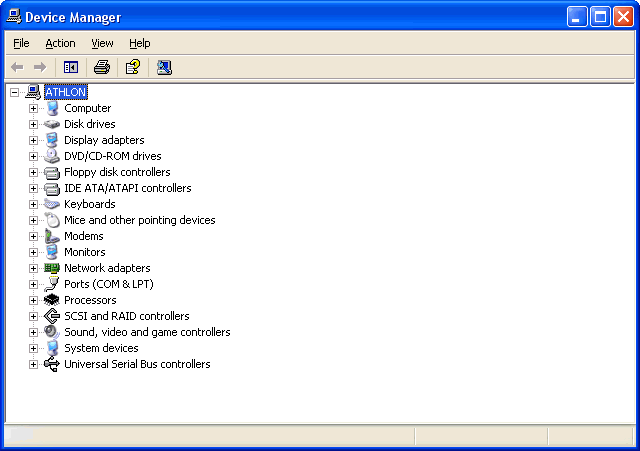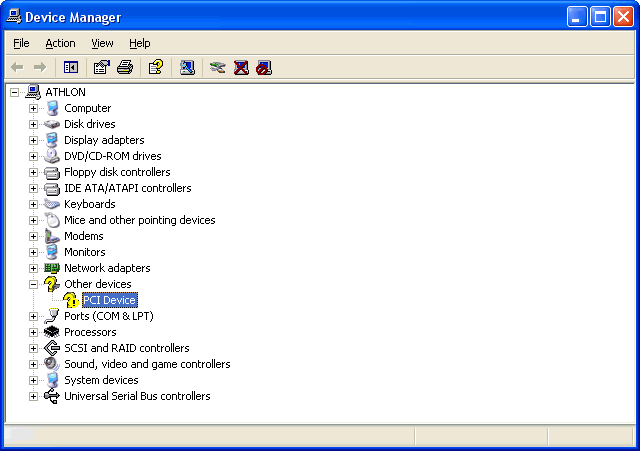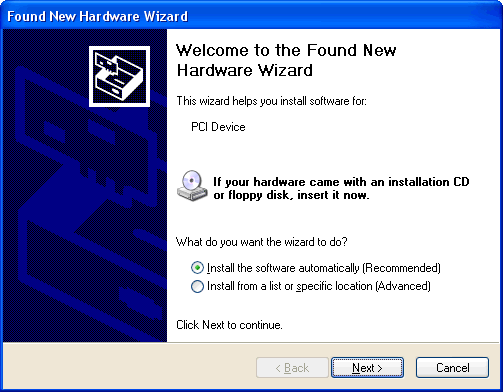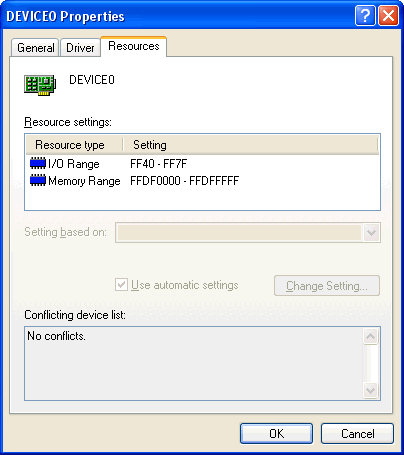

PCI 4 - PCI plug-and-play
Now that reads and writes accesses are going through, what does it take for the PCI plug-and-play to work?

Our PCI card is not yet in the list...
When a PCI card sees a configuration space transaction on the bus, and its own IDSEL is asserted, it knows it should respond.
After that, it can be a read or a write but it works the same way than memory or IO spaces do.
A few details:
Please refer to a PCI specification/book for the down-to-earth details.

But the OS requires a driver before...

... it agrees to allocate the memory resource.


Our PCI card is not yet in the list...
Configuration space
Remember that PCI cards have three "spaces" where transactions (reads and writes) take place?- Memory space
- IO space
- Configuration space
The configuration space is the heart of PCI plug-and-play. The OS (Windows, Linux...) reads there first to find if PCI cards are plugged-in, and their characteristics.
For simple boards, the configuration space consists of just 64 bytes. They important fields are:
| Offset | Name | Function | Note | Length |
|---|---|---|---|---|
| 0 | Vendor ID | Manufacturer number | ... allocated by the PCI-SIG | 2 bytes |
| 2 | Device ID | Device number | ... allocated by the manufacturers themselves | 2 bytes |
| 4 | Command | Turn on and off accesses to the PCI board | ... but configuration space accesses are always on | 2 bytes |
| 16 | BAR0 (Base address register 0) | Address at which the PCI board should respond | ... followed by BAR1 through BAR5 | 4 bytes each |
By implementing the right values and registers at these locations, the OS can "find" the PCI card.
Configuration space transactions
Each PCI slots as a signal called IDSEL. The IDSEL signal is not shared along the bus; each PCI slot has its own.When a PCI card sees a configuration space transaction on the bus, and its own IDSEL is asserted, it knows it should respond.
|
parameter PCI_CBECD_CSRead = 4'b1010; // configuration space read parameter PCI_CBECD_CSWrite = 4'b1011; // configuration space write wire PCI_Targeted = PCI_TransactionStart & PCI_IDSEL & ((PCI_CBE==PCI_CBECD_CSRead) | (PCI_CBE==PCI_CBECD_CSWrite)) & (PCI_AD[1:0]==0); |
After that, it can be a read or a write but it works the same way than memory or IO spaces do.
A few details:
- For the Vendor ID, let's just pick a number; we are just experimenting, right? ok, 0x0100 works fine.
- Device ID can be left at 0
- Command bit 0 is the "on/off" bit for the IO space, while bit 1 is the "on/off" bit for the Memory space.
- BAR0 is a register that is written by the OS, once it decides at which address the PCI card should be located.
Please refer to a PCI specification/book for the down-to-earth details.
Windows plug-and-play
Once these registers are implemented, the OS can discover the new hardware.
But the OS requires a driver before...

... it agrees to allocate the memory resource.
